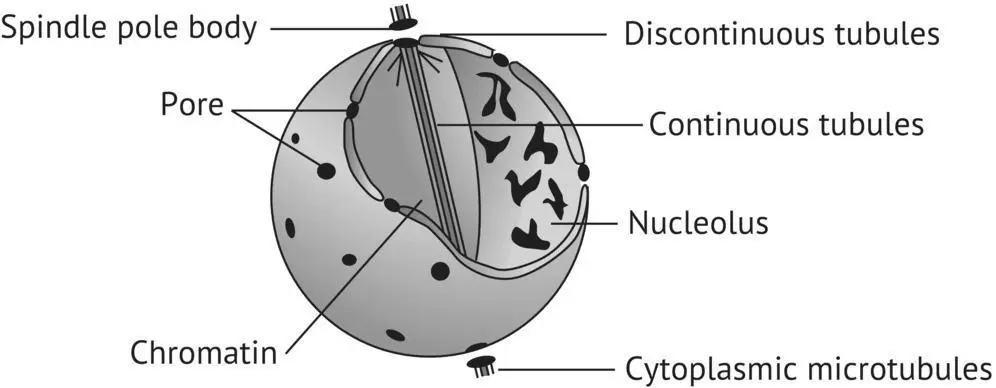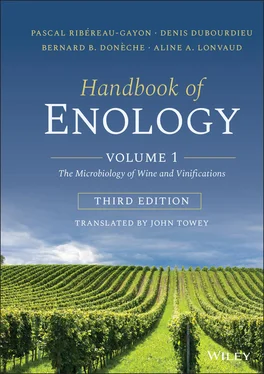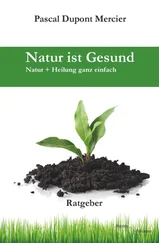Distributed on the periphery of the cytoplasm, the mitochondria (mt) are spherical or rod‐shaped organelles surrounded by two membranes. The inner membrane is highly folded to form cristae. The general organization of mitochondria is the same as in higher plants and animal cells. The membranes delimit two compartments: the intermembrane space and the matrix. Mitochondria are true respiratory organelles for yeasts. Under aerobic conditions, the S. cerevisiae cell contains about 50 mitochondria. Under anaerobic conditions, these organelles degenerate, their inner surface decreases, and the cristae disappear. Supplementing the culture medium with ergosterol and unsaturated fatty acids limits the degeneration of mitochondria under anaerobic conditions. In any case, when cells formed under anaerobic conditions are placed under aerobic conditions, the mitochondria regain their normal appearance. Even in aerated grape must, the high sugar concentration represses the synthesis of respiratory enzymes. As a result, the mitochondria no longer function. This phenomenon is called catabolite repression by glucose ( Section 2.3.1).
The mitochondrial membranes are rich in phospholipids—principally PC, PI, and PE ( Figure 1.5). PG, a minority component in the plasma membrane, is predominant in the inner mitochondrial membrane. The fatty acids of the mitochondrial phospholipids are C16:0, C16:1, C18:0, and C18:1. Under aerobic conditions, the unsaturated residues predominate. When the cells are grown under anaerobic conditions, without lipid supplements, the short‐chain saturated residues become predominant; cardiolipin and PE diminish, whereas the proportion of PI increases. Under aerobic conditions, the temperature during the log growth phase influences the degree of unsaturation of the phospholipids—which becomes higher as the temperature decreases.
The mitochondrial membranes also contain sterols, as well as numerous proteins and enzymes (Guerin, 1991).
The two membranes, inner and outer, contain enzymes involved in the synthesis of phospholipids and sterols. The ability to synthesize significant amounts of lipids, characteristic of yeast mitochondria, is not limited by respiratory‐deficient mutations or glucose catabolite repression.
The outer membrane is permeable to most small metabolites coming from the cytosol, since it contains porin, a 29 kDa transmembrane protein possessing a large pore. Porin is present in the mitochondria of all eukaryotes as well as in the outer membrane of bacteria.
The intermembrane space contains adenylate kinase, which ensures interconversion of ATP, adenosine diphosphate (ADP), and adenosine monophosphate (AMP).
Oxidative phosphorylation takes place in the inner mitochondrial membrane, while the matrix, on the other hand, is the center of the reactions of the citric acid cycle and of the oxidation of fatty acids.
The majority of mitochondrial proteins are coded by the genes of the nucleus and are synthesized by the free polysomes of the cytoplasm. The mitochondria, however, also have their own machinery for protein synthesis. In fact, each mitochondrion possesses a circular 75 kb (kilobase pairs) molecule of double‐stranded DNA and ribosomes. The mtDNA is extremely rich in A (adenine) and T (thymine) bases. It contains a few dozen genes, which code in particular for the synthesis of certain pigments and respiratory enzymes, such as cytochrome b , and several subunits of cytochrome oxidase and of the ATP synthase complex. Some mutations affecting these genes can result in the yeast becoming resistant to certain specific mitochondrial inhibitors such as oligomycin. This property has been applied in the genetic marking of wine yeast strains. Some mitochondrial mutants are respiratory deficient and form small colonies on solid agar media. These “ petite ” mutants are not used in winemaking because it is impossible to produce them industrially by respiration.
The yeast nucleus is spherical. It has a diameter of 1–2 μm and is barely visible using a phase‐contrast optical microscope. It is located near the principal vacuole in non‐proliferating cells. The nuclear envelope is made up of a double membrane attached to the ER. It contains many ephemeral pores, whose locations are continually changing. These pores enable the exchange of small proteins between the nucleus and the cytoplasm. Contrary to what happens in higher eukaryotes, the yeast nuclear envelope is not dispersed during mitosis. In the basophilic part of the nucleus, the crescent‐shaped nucleolus can be seen by using a nuclear‐specific staining method. As in other eukaryotes, it is responsible for the synthesis of ribosomal RNA. During cell division, the yeast nucleus (Williamson, 1991) also contains rudimentary spindle threads composed of microtubules of tubulin, some discontinuous and others continuous ( Figure 1.10). The continuous microtubules are stretched between the two spindle pole bodies (SPB). These corpuscles are permanently included in the nuclear membrane and correspond to the centrioles of higher organisms. The cytoplasmic microtubules depart from the SPB toward the cytoplasm.
The size of the yeast genome, about 12,800 kb, is low compared to that of higher eukaryotes (about 10 times lower than that of Arabidopsis ). It has a genome almost three times larger than in Escherichia coli , but its genetic material is organized into true chromosomes. Each one contains a single molecule of linear double‐stranded DNA associated with basic proteins known as histones, to form chromatin that contains repetitive units called nucleosomes. Because of their small size and their weak condensation, yeast chromosomes cannot be observed under the microscope.
Pulsed‐field electrophoresis (Carle and Olson, 1984; Schwartz and Cantor, 1984) enables the separation of the 16 chromosomes in S. cerevisiae , whose sizes range from 200 to 2,000 kb. This species has a very large degree of chromosomic polymorphism. This characteristic has made karyotype analysis one of the main criteria for the identification of S. cerevisiae strains ( Section 1.9.3).
The full chromosomal DNA sequence of S. cerevisiae (S288C) was established in 1996. It has 6,275 genes, including 23% in common with humans (Goffeau et al ., 1996). In 2009, the EC1118 diploid genome of a yeast strain in wine was fully sequenced. It reveals the gene transfer mechanisms between Saccharomyces and non‐ Saccharomyces . These works show that the genome of winemaking yeast may be constantly remodeled by the addition of exogenous genes (Novo et al ., 2009). This detailed knowledge of the yeast genome will constitute a powerful tool, both for the molecular understanding of its physiology and for the selection and improvement of winemaking strains. Current research done in the field of synthetic biology, as well as in enology, aims to create and assemble a full artificial genome of S. cerevisiae yeast with a number of potential medical and industrial applications, including in the field of enology (Richardson et al ., 2017).
The yeast chromosomes contain relatively few repeated sequences. Most genes are only present in a single copy in the haploid genome, but the ribosomal RNA genes are highly repeated (about 100 copies).

FIGURE 1.10 The yeast nucleus (Williamson, 1991).
The genome of S. cerevisiae also contains transposable elements or transposons—specifically, transposon yeast (Ty) elements. These comprise a central ε region (5.6 kb) framed by a direct repeated sequence called the δ sequence (0.25 kb). The δ sequences have a tendency to recombine, resulting in the loss of the central region and a δ sequence. As a result, there are about 100 copies of the δ sequence in the yeast genome. The Ty elements code for noninfectious retrovirus particles. This retrovirus contains Ty messenger RNA as well as a reverse transcriptase capable of copying the RNA into complementary DNA. The latter can reinsert itself into any site of the chromosome. The random excision and insertion of Ty elements in the yeast genome can modify the genes and play an important role in strain evolution.
Читать дальше













